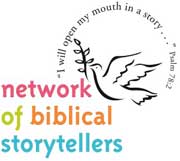The Six-Year-Old Who Embodied Jesus’ Way of Peace
By Amelia Boomershine
This winter the Dayton Art Institute hosted a Norman Rockwell exhibit. The painting which most captivated me was of a little girl dressed in white escorted by federal marshals, with smashed tomatoes dripping on the brick walls where they had landed after being thrown at her. It was an illustration of the experience of Ruby Bridges who integrated Frantz Elementary School in 1960 New Orleans.
Every day, coming and going, Ruby walked through a mob of howling and screaming people outside the school doors. Every day she sat alone in her classroom learning to read with a calm that amazed her teacher, Mrs. Henry. One day Mrs. Henry learned that Ruby prayed twice a day—a few blocks before the mob on the way to school, and a few blocks past the mob on her way home.
This was her prayer:
Please, God, try to forgive those people.
Because even if they say those bad things,
They don’t know what they’re doing.
So you could forgive them,
Just like you did those folks a long time ago
When they said terrible things about you.
Dr. King preached, “How do we love our enemies? First, we must develop and maintain the capacity to forgive…It is impossible even to begin the act of loving one’s enemies without the prior acceptance of the necessity, over and over again, of forgiving those who inflict evil and injury upon us.”
Ruby Bridges clearly internalized the story of Jesus on the cross, as well as his teaching about loving our enemies. At a young age she embodied Jesus’ way of peace in the world. Black History Month is a time to remember and honor the courage of Ruby Bridges; every month is a time to prepare our own spirit for such courage through learning the stories of Jesus by heart.
RESOURCES
The Story of Ruby Bridges by Roberts Coles (Scholastic Press, 1995)
Through My Eyes by Ruby Bridges (Scholastic Press, 1999)
Strength to Love by Martin Luther King Jr. (Fortress Press, 2010)
Counteracting a Modern Christian Heresy
by Tom Boomershine
One of the ironies of the Bible in today’s world is that it often is used as a basis for delight in warfare and the possibility of conquest. We heard Landrum Bolling speak at Earlham College this week. Landrum was president of the college when I was a student there (1958-62) and has been engaged since 1968 in high level conversations seeking peace in Israel-Palestine. He described the biblical interpretation of Christian Zionism rejoicing at the second coming of Jesus as the total conquest of the Holy Land by Israel and what would amount to a genocide of the Palestinian people as a modern Christian heresy. There is no continuity between this delight in the possibility of widespread killing and oppression and the teaching and spirit of Jesus as celebrated in the New Testament. Those who study the Bible and particularly the New Testament as a source for learning the ways that will lead to peace have lots of work to do. The GoTell website is a part of that work.
 On-Going Collaboration with the Network of Biblical Storytellers
On-Going Collaboration with the Network of Biblical Storytellers
GoTell and the Network of Biblical Storytellers (NBS) collaborate in the extension of biblical storytelling around the world and on the Internet. We continue to integrate resources from the GoTell website into the NBS site. The more we can extend the distribution of quality resources for biblical storytelling the better. We appreciate any feedback you can give us on the resources we have developed. The NBS Board retreat this month will be a great opportunity to explore further the linking of our websites.


